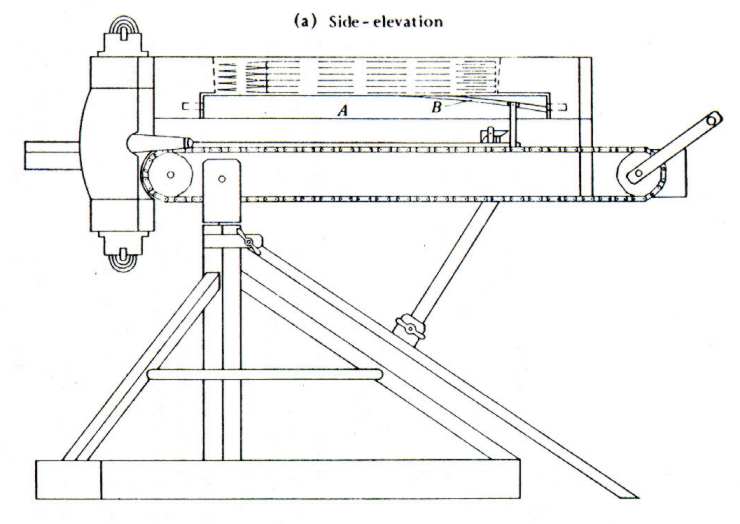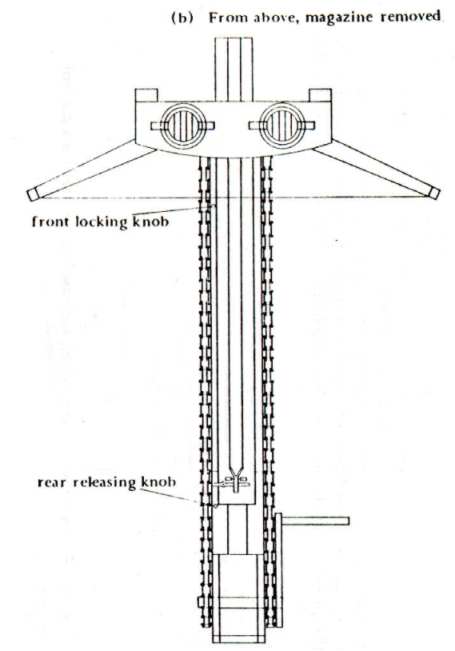|
|
Das Repetier Katapult von Dionysius Most complex catapult (καταπέλτης) invented in ancient times was a repeating weapon designed (according to Soedel and Foley ) by Dionysius of Alexandria (Διονύσιος ο Αλεξανδρεύς), who worked in the arsenal at Rhodes. As this detail drawing shows, arrows were fed by gravity from a magazine into the arrow trough by means of a revolving drum that was slotted to accept one shaft at a time. The revolution of the drum was controlled by a curved cam groove on its surface, which engaged a metal finger mounted on the slider. The motion of the slider was in turn produced by two flat-linked chains on each side to the machine. According to the surviving text describing the repeater, the chains ran over five-sided prisms at each end of their loop. In the author’s view these prisms are assumed to have worked as inverted gears; in other words, the chain-link drive for the cocking and firing sequence relied on an engagement between the lugs on the chain links and a pentagonal gear for accepting the lugs. The rear prism was turned by a winch, and the bowstring claw was locked and unlocked at the appropriate times by pegs mounted in the stock of the weapon, past which the slider moved. Hence by reciprocating the winch the device could fire arrows automatically until the magazine was empty.
The polybolos with its two pentagonal gears linked by a chain drive powered by a windlass.
Dionysius Repeating Catapult. The gap between magazine and stock is drawn larger for the sake of clarity Remark: There is also a Dionysius of Alexandria known as an astronomer, maybe the same who produced the repeating catapult. Werner Soedel and Vernard Foley, Ancient Catapults, Scientific American, March 1979, pp. 150 - 160 See also
|



